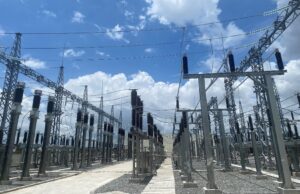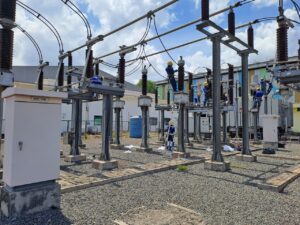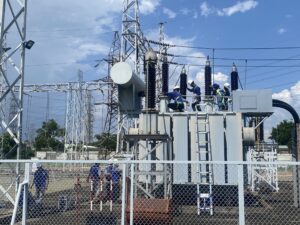Installation conditions, environmental conditions, power quality, and operating processes cause negative impacts on electrical equipment such as overheating, partial discharge, mechanical damage, insulation damage or aging, gas leakage, incorrect metering devices, and incorrect protection devices. Therefore, preventive maintenance is an indispensable part to increase the stability and reliability of the power system. Preventive maintenance also helps the power system operator to proactively inform the operating status of the equipment and have a plan to replace, upgrade, and repair the equipment promptly.
1. Equipment maintenance:
Perform visual inspection of equipment such as busbar connection points, signs of overheating, discharge, insulating material surface, signs of oil and gas leakage. Clean, vacuum, clean the surface of equipment, insulating material surface, insulating porcelain, arc extinguishing chamber, main contacts. Check bolt tightening and mechanical adjustment, power cable connection points, busbar, grease main contact contacts and mechanical structures, including:
♦ Check the appearance of the equipment
– Connection points of power cables, busbars
– Signs of overheating, electric discharge
– Equipment body and surface
– Surface of insulating materials, insulating porcelain
– Signs of oil and gas leakage
♦ Clean, vacuum, clean the equipment surface
– Surface of insulating materials, insulating porcelain
– Arc extinguishing chamber, main contacts
♦ Check bolt tightening and mechanical adjustment
– Connection points of power cables, busbars
– Grease main contact contacts
– Grease mechanical structures
2. Equipment testing:
Conduct testing and experiments to determine the operating parameters and performance characteristics of the equipment. Typical test items include insulation resistance testing, contact resistance testing, coil resistance testing, high voltage testing, loss testing, ground resistance testing, relay performance testing, etc., including:
♦ Testing of medium and high voltage electrical cabinets and equipment
– Power cables, lightning arresters, insulators
– Circuit breakers, DS, CT, VT, FCO
– Transformers, motors
– Capacitors, reactors, reclosers, relays
♦ Testing of low voltage electrical cabinets and equipment
– Power cables
– Circuit breakers, CT, relays, trip units
– Capacitors, reactors, capacitor controllers
♦ Testing of grounding systems
– Substation grounding systems
– Lightning systems
3. Basic testing items:
♦ DC winding resistance
♦ Turn ratio
♦ Insulation resistance
♦ Dielectric loss
♦ Magnetization curve
♦ No-load, short-circuit loss
♦ Insulating oil sample test
♦ Contact resistance
♦ Vacuum chamber and SF6 insulating gas content test
♦ High voltage test
♦ Opening/closing time test
♦ Relay functions test
♦ Capacitor capacity measurement
♦ Capacitor controller test, temperature
♦ Earth resistance measurement
4. Applicable standards:
♦ Vietnamese standard system TCVN on testing and maintenance of electrical systems
♦ NETA MTS: Standard on technical instructions for testing and maintenance of electrical equipment and systems.
♦ IEC, IEEE, NEC standard system
♦ Technical characteristics of equipment and manufacturing parameters of the manufacturer
♦ Maintenance and operation instructions of the manufacturer.




